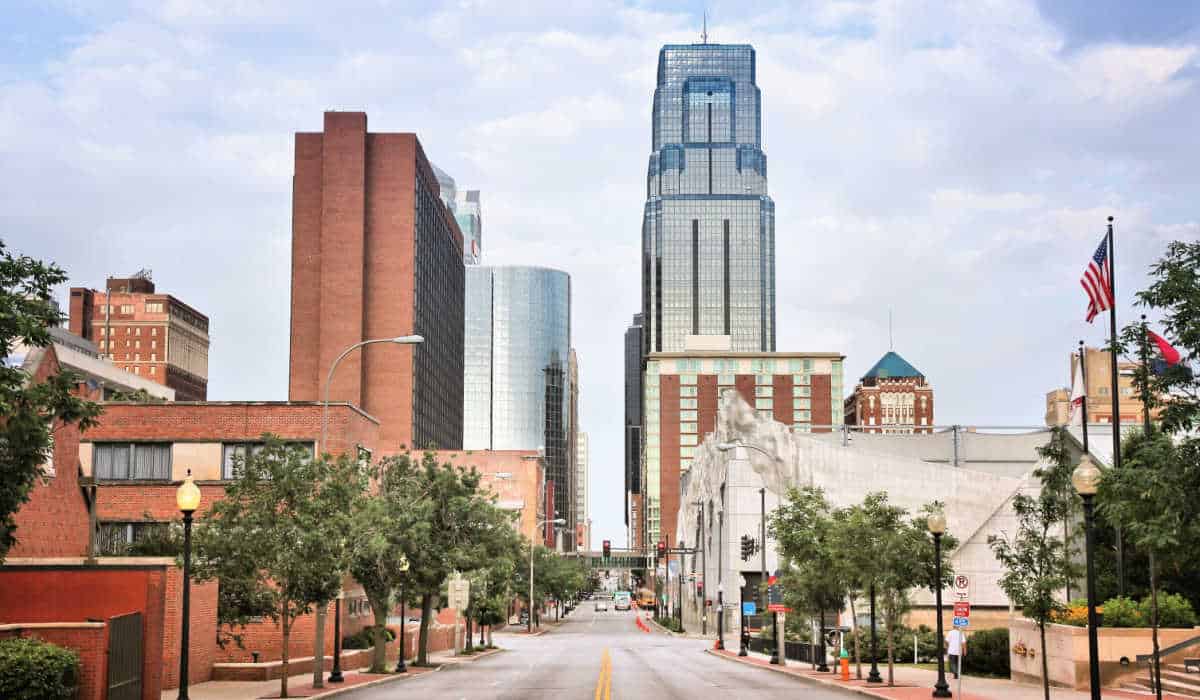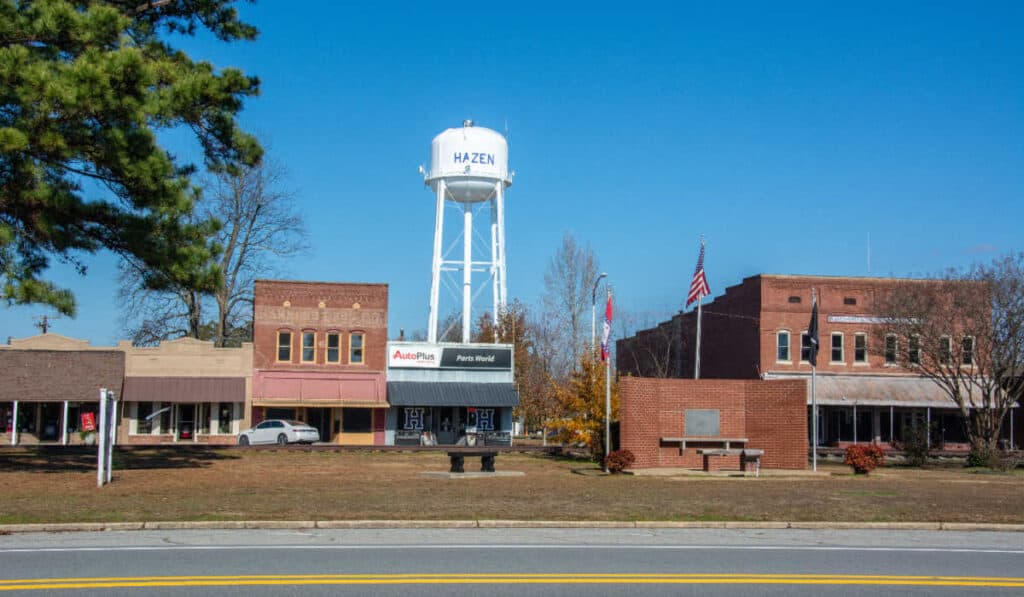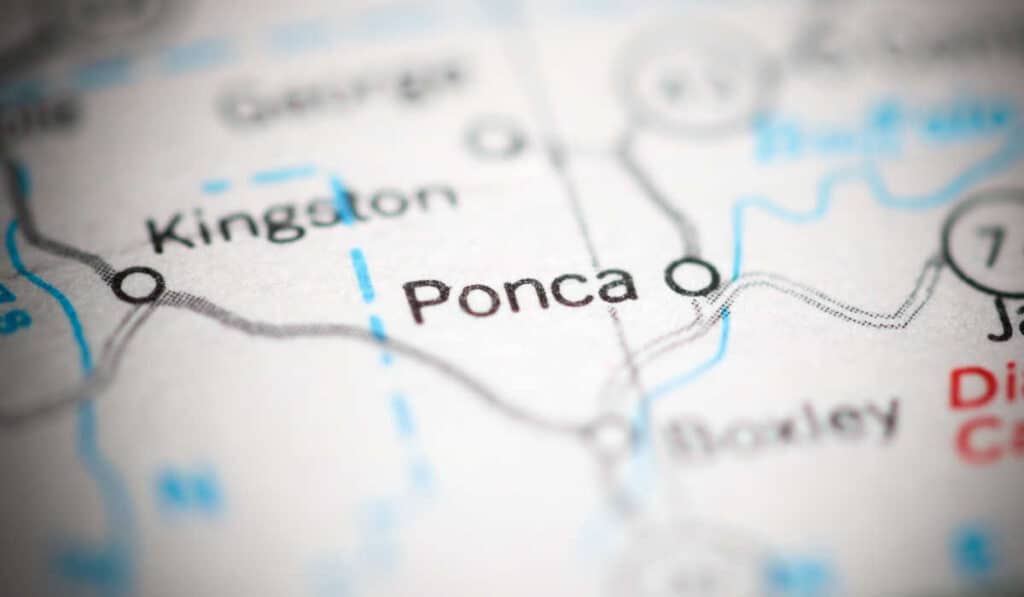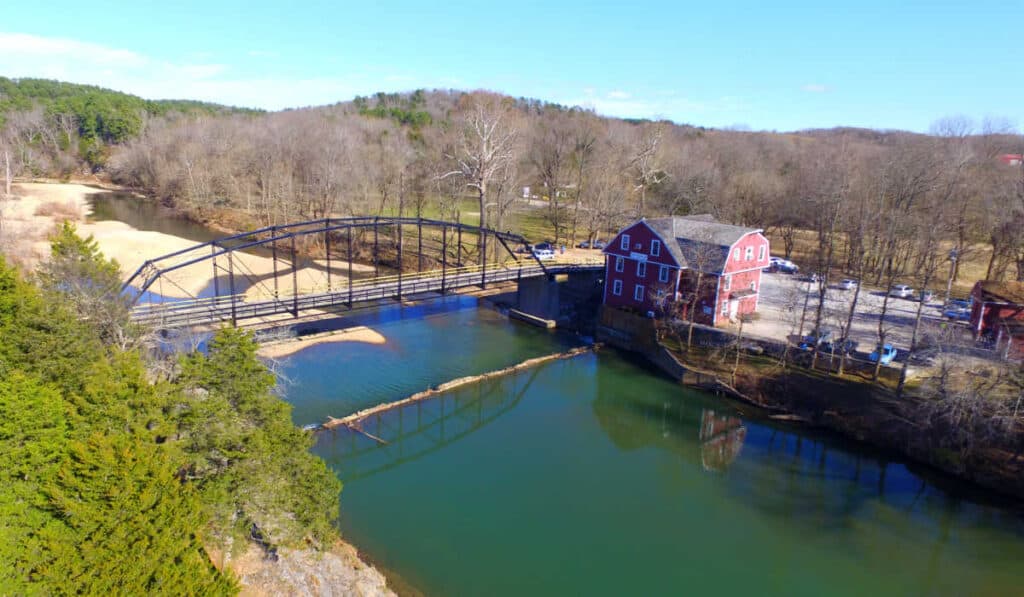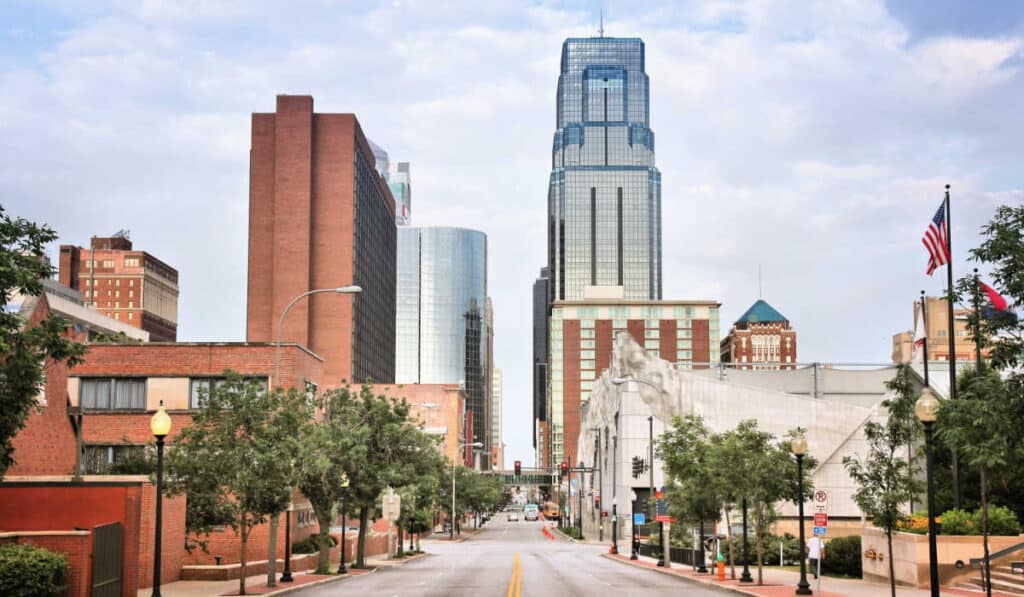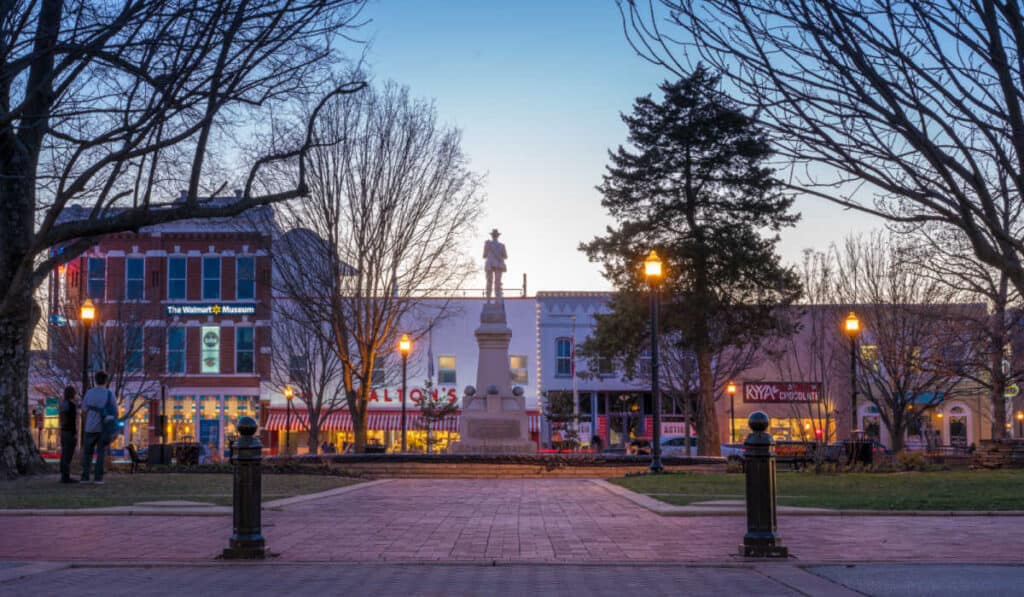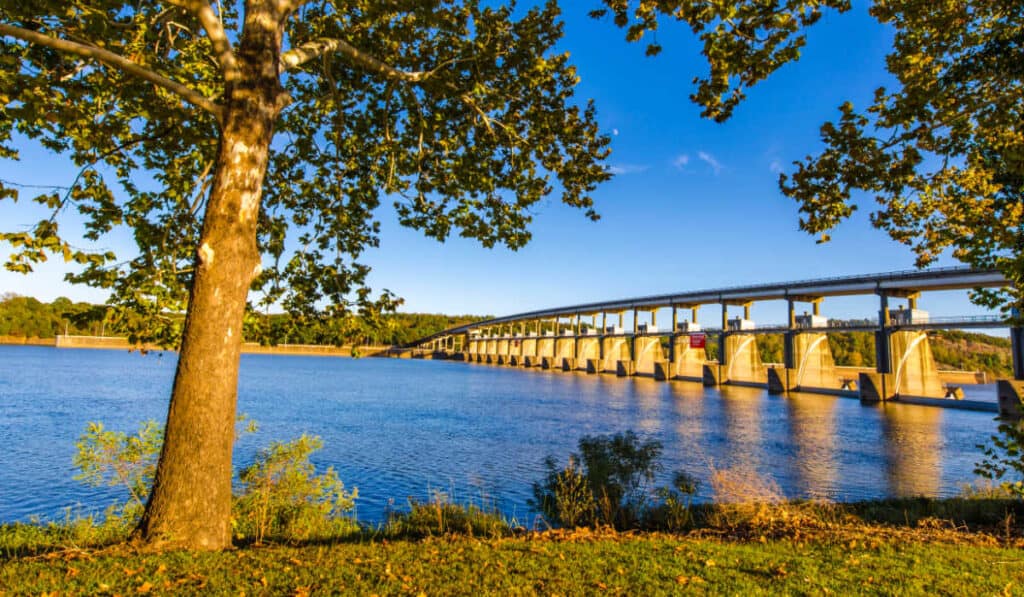What Is Kansas City, Kansas Known For?
Kansas City, Kansas, often referred to as “KCK,” is best known as a significant transportation hub due to its strategic location at the convergence of the Kansas and Missouri Rivers. It boasts rich cultural heritage and historical landmarks, such as the Rosedale Arch, which pays homage to World War I veterans. The city is also a hotspot for NASCAR fans as it houses the Kansas Speedway, which hosts several major races annually. KCK, together with its twin city, Kansas City, Missouri, is home to some legendary barbecue cuisines, contributing to the region’s famed culinary culture. It’s also home to Sporting Kansas City, a major league soccer team, and the Children’s Mercy Park, enhancing its sportive atmosphere.
Nestled in the heart of America, Kansas City, Kansas is a bustling metropolitan area that boasts a rich history and a vibrant culture. Known for its distinctive contributions to music, food, and entertainment, this city offers a diverse array of attractions and experiences for locals and visitors alike. With a unique blend of Midwestern charm and urban sophistication, Kansas City has something for everyone.
One of Kansas City’s most noteworthy claims to fame is its deep-rooted connection to jazz music. Renowned musicians such as Charlie Parker and Count Basie got their start in Kansas City’s vibrant music scene, and these influences continue to shape the city’s musical landscape today. Along with its strong jazz heritage, Kansas City is also famous for its unique culinary offering: the much-loved Kansas City-style barbecue. Characterized by its distinctive sweet and smoky flavor, this barbecue tradition has captured the hearts (and stomachs) of people all over the world.
Apart from its rich cultural contributions, Kansas City has also made a mark in the entertainment industry. With the distinction of being home to the first-ever multiplex movie theater in the United States, built in 1963, Kansas City continues to leave its footprint in the world of film and innovation. As you explore the many facets of this city, you’ll discover that Kansas City offers a taste of Americana that is both captivating and fulfilling.
Table of Contents
Art and Culture
Kansas City is home to a thriving art and culture scene, with internationally recognized museums, dynamic gallery districts, and outstanding performances that showcase its rich history and diverse creativity.
The Nelson-Atkins Museum of Art is a major attraction, featuring an extensive collection of thousands of art pieces from various cultures and time periods. It is widely recognized for its iconic Shuttlecocks sculpture on the museum’s expansive lawn.
Another prominent cultural institution is the American Jazz Museum, which pays homage to the city’s significant jazz roots. Kansas City has a rich history in jazz music, and the museum honors this legacy by celebrating the accomplishments of African American musicians such as Charlie Parker and Count Basie.
The Kemper Museum of Contemporary Art is another must-see destination, showcasing modern and contemporary art from around the world. This museum, known for its unique architecture and free admission, hosts rotating exhibits that feature innovative works in various mediums.
In addition to its museums, Kansas City is also known for its vibrant public art installations, such as the numerous Kansas City murals. These colorful, large-scale paintings can be found adorning buildings throughout the city, showcasing the talents of local artists and adding to the area’s cultural identity.
Overall, the art and culture scene in Kansas City, Kansas is diverse, captivating, and deeply rooted in the city’s history, making it a magnet for both locals and visitors who want to experience and immerse themselves in the unique creative expressions Kansas City has to offer.
History
Kansas City, Kansas, situated at the confluence of the Kansas and Missouri rivers, has a rich and varied history. The area was once inhabited by Native American tribes such as the Kansa and Shawnee. In the 19th century, the region saw significant development as a hub for trade, transportation, and westward expansion.
In the early 1800s, the Missouri and Kansas rivers served as important trading routes for fur trappers and traders. The establishment of trading posts and forts, such as Fort Osage and the Chouteau Trading Post, facilitated interaction between European and Native American communities. The town of Independence sprang up near these trading posts and gained importance as a starting point for westward expeditions, including the Santa Fe, Oregon, and California trails.
The passage of the Kansas-Nebraska Act in 1854 opened up the region for settlement, and tensions between pro-slavery and anti-slavery groups led to the “Bleeding Kansas” period. Throughout the American Civil War, Kansas played a crucial role in providing soldiers and supplies to the Union army. During this time, several towns were established, including Quindaro, which served as an important stop on the Underground Railroad.
Post-Civil War, Kansas City flourished and experienced rapid growth. With the arrival of the railroad, the city became a transportation hub. Towns like Liberty and Armstrong developed around the expanding railroad network. The emergence of the stockyards and meatpacking industry in the late 19th century further solidified Kansas City’s status as a pivotal economic center.
Today, Kansas City remains an influential city with a diverse cultural landscape. Residents and visitors can experience its rich history at various historical sites and institutions, such as the Wyandotte County Museum.
Attractions and Museums
Kansas City, straddling the border between Kansas and Missouri, is a major metropolitan area steeped in rich American history and culture. It boasts a variety of museums and entertainment options catering to diverse interests.
Nelson-Atkins Museum of Art, located at 4525 Oak St, Kansas City, MO 64111, is a renowned institution housing nearly 40,000 works of art. Known for its iconic Shuttlecocks installation out front, the museum attracts both locals and tourists alike.
A significant historical attraction in Kansas City is the National World War I Museum. As America’s official WWI museum designated by Congress, this iconic landmark hosts a collection of more than 100,000 artifacts and is built in the Egyptian Revival architectural style. It is located at 2 Memorial Dr, Kansas City, MO 64108-4616.
For music enthusiasts, the American Jazz Museum offers an immersive experience into the rich heritage of jazz music. Situated at 1616 E 18th St, Kansas City, MO 64108, this museum celebrates the history, influence, and impact of jazz in American culture.
Another must-visit location is the Kemper Museum of Contemporary Art at 4420 Warwick Blvd, Kansas City, MO 64111-1821. This acclaimed and free contemporary art museum features works by modern artists, making it a favorite among Kansas City’s cultural offerings.
In addition to its museums, Kansas City is known for its popular entertainment destinations like the Country Club Plaza. With its sprawling shopping district, this outdoor shopping center attracts visitors with its unique Spanish-inspired architecture and wide range of shops, restaurants, and entertainment options.
Not to be overlooked, the National Museum of Toys and Miniatures at 5235 Oak St, Kansas City, MO 64112-2704, is an intriguing attraction that features an impressive collection of vintage toys and intricately detailed miniatures.
Lastly, the Wyandotte County Museum in Kansas City, Kansas offers visitors a trip back in time through the area’s history and cultural heritage. This local gem is located at 631 N 126th St, Kansas City, KS 66109-1700.
Moving away from museums for a moment, Kansas City’s Union Station is a significant historical landmark located at 30 W Pershing Rd, Kansas City, MO 64108. Once a bustling transportation hub, Union Station now serves as a cultural center offering a variety of attractions, including a planetarium and theaters.
Sports and Recreation
Kansas City, Kansas is renowned for its rich sports culture and diverse recreational opportunities. In this lively city, sports enthusiasts get to experience an exciting range of professional sports as well as various recreational activities.
Home to several major professional sports leagues, Kansas City takes pride in hosting well-known teams like the Kansas City Royals (Major League Baseball) and the Kansas City Chiefs (National Football League). These teams have left an indelible mark on the city’s sports history, with the Royals winning the World Series in 1985 and 2015, and the Chiefs taking home the Super Bowl title in 1970 and 2020.
Another aspect that Kansas City is famous for in sports is the Negro Leagues Baseball Museum. Dedicated to preserving the history of African-American baseball, this museum offers an insightful glimpse into the lives of the Negro league players who paved the way for many of today’s baseball stars. It showcases a plethora of memorabilia, photographs, and artifacts, making it a must-visit for every sports enthusiast.
Furthermore, soccer aficionados can revel in Sporting KC, Kansas City’s Major League Soccer team, which has also brought home several national championships. The city also features the Kansas Speedway, a popular destination for NASCAR fans.
Kansas City offers plenty of recreational opportunities as well. There are numerous parks, lakes, hiking, and biking trails that appeal to outdoor enthusiasts, while indoor attractions like the LEGOLAND Discovery Center offer fun activities for kids and adults alike.
In essence, Kansas City’s sports and recreation landscape is truly diverse and offers something for everyone. From major league sports to recreational facilities and a rich history, it is no surprise that this city is beloved by sports fans and active individuals alike.
Neighborhoods and Architecture
Kansas City, Kansas, boasts a diverse range of neighborhoods and architectural styles that contribute to its unique identity. With both residential and commercial areas, the city’s neighborhoods include Downtown, Rosedale, Turner, Shawnee, Liberty, and Argentine, each offering its own distinctive atmosphere and history.
Downtown serves as the heart of Kansas City, where visitors can admire the blend of historic and contemporary architecture. This area showcases impressive structures such as the New York Life Insurance Building, the city’s first high-rise building with elevators, dating back to 1890.
Rosedale is a quaint neighborhood, home to a variety of architectural styles. With its tree-lined streets and well-kept homes, it demonstrates a strong sense of community and pride in the area.
Turner features a mix of residential and commercial spaces, with notable properties highlighting the rich history of Kansas City, Kansas. In this neighborhood, you can find a variety of architectural styles, from classic bungalows to more modern designs.
Shawnee is a thriving, family-friendly neighborhood that offers a mix of residential and commercial spaces. The area is known for its well-maintained properties, showcasing the architectural diversity of Kansas City, Kansas.
Liberty is another charming neighborhood with a mix of commercial and residential spaces. The area has a rich history and has long been a hub for community gatherings and events.
Argentine is a historic neighborhood with working-class roots. Its residential architecture reflects the area’s industrial history, featuring a variety of styles that range from traditional to more contemporary designs.
Kansas City, Kansas, is also renowned for its public art and sculptures, which can be seen in various neighborhoods throughout the city. From murals that celebrate the area’s history and diversity to contemporary sculptures that add a modern touch, you can find unique and interesting art pieces scattered across the city.
In summary, by exploring the various neighborhoods and their architecture in Kansas City, Kansas, visitors can appreciate the city’s unique blend of history, character, and culture through its stunning buildings, public art, and lively communities.
Shopping and Nightlife
Kansas City, Kansas, is known for its vibrant shopping and nightlife scene, offering a diverse range of experiences for visitors and locals alike. The Country Club Plaza is one of the city’s most iconic shopping destinations, featuring beautiful architecture and an array of high-quality fashion boutiques, gift shops, and homeware outlets.
Apart from the Country Club Plaza, Kansas City boasts various malls and bustling shopping districts throughout its suburbs, catering to every taste and budget. Shoppers can find a mix of well-known brands and unique independent designers while exploring different districts.
When it comes to nightlife, Kansas City does not disappoint. The city is home to a wide selection of bars, nightclubs, and live music venues, showcasing the best of the Midwest’s entertainment scene. From cozy dive bars to vibrant events and sports gatherings, there are endless opportunities to drink, dine, and dance the night away in Kansas City, Kansas.
In addition to traditional bars and clubs, Kansas City’s nightlife extends to its two remarkable casinos, which promise excitement for those who are feeling lucky. Several nightlife districts, such as Waldo and Martini Corner, each have their own unique charm and atmosphere, allowing visitors to experience the diverse offerings of Kansas City after dark.
In essence, Kansas City, Kansas, offers a rich and varied shopping and nightlife experience that caters to a wide range of interests, making it a must-visit destination for people looking to explore the finer things in life.
Outdoor and Nature
Kansas City is known for its beautiful parks and nature attractions that offer year-round enjoyment. During the summer, take advantage of the city’s nickname as the “City of Fountains” by visiting some of its 200+ fountains. These fountains are a charming addition to the landscape, making the city even more visually appealing.
In addition to the fountains, Kansas City is proud of its many parks and nature attractions. Some popular outdoor spots include:
- Tallgrass Prairie National Preserve: This preserve offers a glimpse of the unique Kansas Plains ecosystem, featuring expanses of tallgrass prairie, hiking trails, and guided bus tours for those who prefer a leisurely experience.
- Burr Oak Woods Nature Center: Covering 1,071 acres, this nature center boasts woodlands, ponds, and various other natural attractions perfect for nature lovers and families.
Kansas City’s location in the Great Plains region also means that it offers unique seasonal experiences. In the spring and fall, enjoy the beauty of the changing foliage as the plains transition from the vibrant colors of warmer months to the more subdued hues of winter. This makes the city an excellent destination for hikes or leisurely walks.
Winter in Kansas City transforms the landscape into a serene, snow-covered paradise. Visitors can enjoy a variety of winter sports like snowshoeing and cross-country skiing in various parks and nature reserves.
The city’s proximity to Nebraska allows for easy access to additional outdoor attractions, vastly expanding the options for nature enthusiasts who want to experience a variety of landscapes in the area.
Events
Kansas City, Kansas is home to a variety of events that cater to diverse interests and provide entertainment for residents and visitors alike. Throughout the year, the city hosts numerous festivals, sporting events, and cultural celebrations.
One of the most popular events in Kansas City is the annual Kansas City Renaissance Festival. This event allows attendees to step back in time and mingle with royalty, fire eaters, and other unique characters from the medieval era. The festival features live entertainment, delicious food, and an array of artisans showcasing their crafts.
Another significant event worth noting is the Wyandotte County Ethnic Festival. This cultural celebration aims to showcase and honor the diverse cultures of the people who have made Kansas City their home. From live performances to cultural displays, the festival offers an excellent opportunity for attendees to learn about and appreciate different traditions and customs.
Kansas City also hosts the Wyandotte County Fair, a classic summertime event that brings communities together for a week of fun and entertainment. Featuring carnival rides, pig races, and an irresistible selection of fair food, the event is a perennial favorite among both locals and visitors.
On Memorial Day, Kansas City pays tribute to its fallen heroes through various ceremonies and activities. One notable event is the Memorial Day celebration at the National World War I Museum and Memorial, which includes special presentations, music, and a moving ceremony honoring those who have sacrificed for the nation.
In terms of sports events, Kansas City is home to the Sporting Kansas City soccer team and the Kansas City Monarchs baseball team. Fans can catch games throughout the season and enjoy the excitement of supporting their favorite local teams.
Whether you’re interested in cultural experiences, exciting festivals, or thrilling sports events, Kansas City, Kansas has something for everyone. The city’s extensive events calendar is sure to please all demographics, providing a wealth of diverse entertainment and learning opportunities.
Visitor Information
Kansas City, Kansas welcomes visitors with open arms and offers a variety of attractions, activities, and events for tourists to enjoy. The city is easily accessible with the Kansas City International Airport (MCI) serving as the main entry point for travelers.
One of the most iconic Kansas City attractions is the National World War I Museum at Liberty Memorial that showcases a vast collection of WWI memorabilia and artifacts. History enthusiasts will be enthralled with the virtual reality exhibit, War Remains.
Art lovers will appreciate the Nelson-Atkins Museum of Art, which houses an impressive collection of artwork from different eras and cultures. Kansas City is also known for its rich history in the theater industry, being the site of the first-ever multiplex movie theater in the US, built in 1963 at the Ward Parkway Shopping Center.
Kansas City’s culinary scene is famous for its mouth-watering barbecue, with numerous BBQ joints spread across the city, offering delicious and authentic local flavors.
For outdoor enthusiasts, the city boasts beautiful parks, nature trails, and scenic waterways. Visitors can explore various recreational activities such as hiking, biking, and boating at numerous locations throughout the city.
In addition to these attractions, Kansas City is home to various sporting events and venues. Football, baseball, and soccer fans can catch a game at the local stadiums featuring professional and semi-professional teams.
When planning a trip to Kansas City, the Visit KC website serves as the official visitor’s guide, providing insider tips, local favorites, and information on upcoming events.
While visiting Kansas City, tourists can enjoy a diverse range of activities and attractions, making it an ideal destination for travelers seeking history, art, culture, food, and outdoor adventures.
Local Economy
Kansas City, Kansas, is a significant economic hub in the Midwest, known for its diverse industry base and prominent role in the trading and agricultural sectors. Strategically located near the confluence of the Kansas and Missouri rivers, the city has long served as a central trading post for the region.
Agriculture plays a vital role in Kansas City’s economy, with the fertile lands around the city producing large volumes of corn, wheat, and soybeans. These crops serve as crucial resources that support industries such as food processing and animal feed. Additionally, Kansas City’s proximity to the Missouri River provides convenient access for trading and transportation of goods.
Another key industry in Kansas City’s economy is the meatpacking sector. The city has a long-standing history in this area, dating back to the early 20th century, when it was one of the largest meatpacking centers in the country. Today, the meatpacking industry continues to thrive and plays a significant role in the regional economy, supplying a variety of meat products to local and international markets.
In addition to agriculture and processing sectors, Kansas City’s economy also benefits from a robust distribution and transportation system. Given its central location within the United States, the city offers an ideal hub for warehousing and intermodal transportation, connecting businesses and consumers across the nation.
Overall, the local economy of Kansas City, Kansas, is a thriving mix of agriculture, trading, meatpacking, and transportation industries. Its unique location and historical roots in the region have shaped the city’s economic landscape, making it a key player in the Midwest’s growth and development.
Climate and Weather
Kansas City, Kansas, experiences a humid continental climate characterized by distinct seasonal variations in temperature and precipitation. The summers are hot and humid, while the winters are cold, subjecting the city to extreme temperature changes.
During the summer months, temperatures can reach as high as 100 degrees Fahrenheit. On the other hand, winter temperatures can plunge below zero degrees, making it essential for residents to be prepared for these fluctuations. Precipitation in Kansas City is abundant throughout the year, with an average of over 40 inches of rain annually.
Kansas City’s location in the Midwest United States also contributes to its unique weather patterns and exposes the region to occasional natural disasters such as tornadoes and floods. As part of the infamous “Tornado Alley”, Kansas City is vulnerable to tornadoes during the spring and summer seasons. While tornadoes are not a frequent occurrence, they are a notable aspect of the city’s weather landscape.
One significant event in Kansas City’s history is the Great Flood of 1951. This catastrophic flood impacted many states in the Midwest, including Kansas and Missouri. Heavy rainfall throughout May and June 1951 led to widespread flooding in the Kansas River and Missouri River basins, causing significant damage to Kansas City and surrounding areas. The flood left thousands homeless and resulted in millions of dollars worth of property loss.
Despite its occasional severe weather, Kansas City boasts a vast array of picturesque skies, dramatic sunsets, and strong wind gusts typical for the “big sky” landscape of the Midwest. These elements, combined with the extreme temperature variations, make Kansas City’s climate an essential aspect of the city’s unique identity.
Education and Institutions
Kansas City, Kansas, is home to a diverse and thriving educational landscape that includes prestigious universities, community colleges, and medical institutions. As an important economic and cultural hub in the region, the city offers a wide range of opportunities for students seeking higher education.
University of Kansas Medical Center is one of the most prominent institutions in the city. Located in Kansas City, Kansas, the center focuses on providing top-notch medical education and research facilities. Students here can pursue degrees in various healthcare fields, including medicine, nursing, and allied health professions. The center’s commitment to excellence and innovation makes it a key player in the Kansas City educational scene.
Another significant institution is Kansas City Kansas Community College (KCKCC), which offers a broad range of academic programs and technical training to help students reach their educational and career goals. With a focus on accessibility and affordability, KCKCC serves as a stepping stone for many students looking to complete their two-year degrees or transition into four-year institutions. The community college also partners with local businesses and industries, creating a strong bridge between education and the workforce.
Additionally, the Kansas City metropolitan area boasts other higher education institutions on both sides of the Kansas-Missouri border. These include:
- University of Missouri–Kansas City
- William Jewell College
- Rockhurst University
- Donnelly College
- University of Saint Mary
- Avila University
Students in the area also benefit from the University of Kansas’ Edwards Campus in Overland Park, offering a variety of undergraduate and graduate programs.
In summary, Kansas City, Kansas, is well-equipped with a wide array of educational institutions, providing students with ample opportunities to pursue their academic goals and ambitions. The city’s dedication to higher education ensures a skilled workforce, fostering continued growth and success for the region.
Demographics and Population
Kansas City, Kansas is known for being the third-most populous city in the state of Kansas, as well as the county seat of Wyandotte County. This vibrant and diverse city boasts a rich history and a strong sense of community, which is reflected in its demographic makeup.
According to recent data from the U.S. Census Bureau, Kansas City’s population has surpassed 508,000. This growth cements its status as an important urban center within the region. It is an inner suburb of the older and more populous Kansas City, Missouri, for which it was named.
The city’s diverse population has significantly contributed to its rich cultural tapestry. Current census statistics reveal that there is an average of 2.75 persons per household, with 85.8% of residents having lived in the same house for at least a year. This demonstrates a sense of stability and attachment to the community.
Moreover, 29.7% of Kansas City, Kansas residents aged 5 years and older speak a language other than English at home, showcasing the city’s linguistic and ethnic diversity. This impressive mix of cultures contributes to the unique vibe and character of the city.
In conclusion, Kansas City, Kansas is not only known for its large population and status as the third-largest city in the state, but also for its rich cultural diversity and strong community bonds. As the demographics and population continue to evolve, so too does the city’s identity, creating a thriving and dynamic urban environment.
Transportation
Kansas City, Kansas, located at the confluence of the Missouri and Kansas rivers, boasts a well-developed transportation network. The city’s strategic location in the Midwest allows for easy access to various transport options, including highways, public transportation, and waterways.
RideKC operates the public transportation system, offering buses, shared bike rides, and a free streetcar service in Kansas City. The streetcar runs along a 2-mile route in downtown Kansas City, connecting popular neighborhoods and attractions. This local bus system is an efficient, cost-effective, and environmentally friendly way to navigate the area.
Kansas City’s extensive highway system is another backbone of the transportation network, providing smooth travel for automobiles. The city is centrally located in the Midwest, making it easily accessible by road. A day’s drive from multiple major cities, Kansas City indeed is a hub for road travel.
The Kansas River and Missouri River play a significant role in the transportation history and infrastructure of Kansas City. These rivers have been critical in shaping the city’s development, as they have been used for trade and transport throughout history. They continue to be crucial waterways that provide both commercial and recreational opportunities for residents and visitors alike.
Furthermore, Kansas City’s bikeshare program offers a convenient and active way to explore the city. With multiple hubs and stations throughout the metro area, the bikeshare system includes both smart, electric-assist bikes and traditional pedal bike options.
In summary, Kansas City, Kansas, offers a variety of transportation options that cater to the needs of residents and visitors alike. Its strategic location, coupled with an extensive network of highways, public transit, and waterways, makes Kansas City not only a thriving transportation hub but also a convenient destination for both locals and tourists.
Food and Dining
Kansas City is widely known for its mouthwatering barbecue, which has become an integral part of the city’s food culture. Many flock to Kansas City to experience the unique blend of traditional slow-cooked meats, such as ribs, brisket, and pulled pork, combined with a signature tomato-and-molasses-based barbecue sauce.
Kansas City-style barbecue is characterized by its thick, sweet sauce and various wood-smoking techniques. Popular barbecue joints such as Q39, Joe’s Kansas City Bar-B-Que, and Arthur Bryant’s serve up delicious smoked meats that will satisfy your cravings. Each of these establishments has their own take on Kansas City barbecue, providing diners with a diverse range of flavors and experiences.
In addition to barbecue, Kansas City offers a diverse dining scene that showcases the region’s rich culinary history. The city is home to numerous iconic dishes, such as the KC Strip, a delicious cut of steak named after the city itself. A visit to The Rieger will grant you the opportunity to savor this local specialty.
Ethnic cuisines are also well-represented in Kansas City, with a variety of authentic Mexican and Vietnamese restaurants setting up shop throughout the area. This allows visitors and locals alike to indulge in delicious flavors from around the world.
When it comes to seafood, Kansas City has you covered. Bristol Seafood Grill is a highly popular destination, renowned for its fresh oysters and other aquatic delights. Another fine dining option is Corvino, which offers a chef’s menu in the Tasting Room and live music at the Supper Club.
No matter what your taste buds are craving, Kansas City’s diverse food scene offers something for everyone. Whether you’re in the mood for savory barbecue, hearty steak, or a taste of international cuisine, the city’s dining establishments are eager to impress and delight your senses.
Surrounding Areas
Kansas City, Kansas, is surrounded by several interesting and charming towns, each with their unique attractions and historical significance.
Leavenworth is the oldest city in Kansas and offers a rich history with a beautiful downtown area featuring Victorian-style architecture, antique stores, and the Fort Leavenworth army base. Here, visitors can explore the Carroll Mansion, the C.W. Parker Carousel Museum, and the Frontier Army Museum.
In Olathe, the County Seat of Johnson County, visitors can enjoy attractions such as the Mahaffie Stagecoach Stop and Farm Historic Site, which provides a glimpse into life on the Santa Fe Trail during the 1860s, and the Ernie Miller Nature Center and Park, with its array of native plants, animals, and walking trails.
Grandview is just across the Missouri state border. Here, visitors can go to the Truman Presidential Library and Museum, which tells the story of the 33rd President of the United States, or explore the beautiful Longview Lake Park with its 930-acre lake.
Westport is a historic neighborhood in Kansas City, Missouri, known for its lively entertainment scene, with a mix of local shops, restaurants, and bars. Visitors can learn about the area’s history on the Westport Walking Tour or relax in one of the nearby parks.
Though not directly related to Kansas City, Kansas, it is worth noting the connections with California and Oregon. The city served as a gateway to the West, with many settlers embarking on their journey on the famous California and Oregon Trails. Markers and historic sites related to these important pathways can be found in and around Kansas City.
All of these surrounding areas contribute to the rich tapestry that makes the overall Kansas City experience so unique and appealing to visitors and residents alike.

